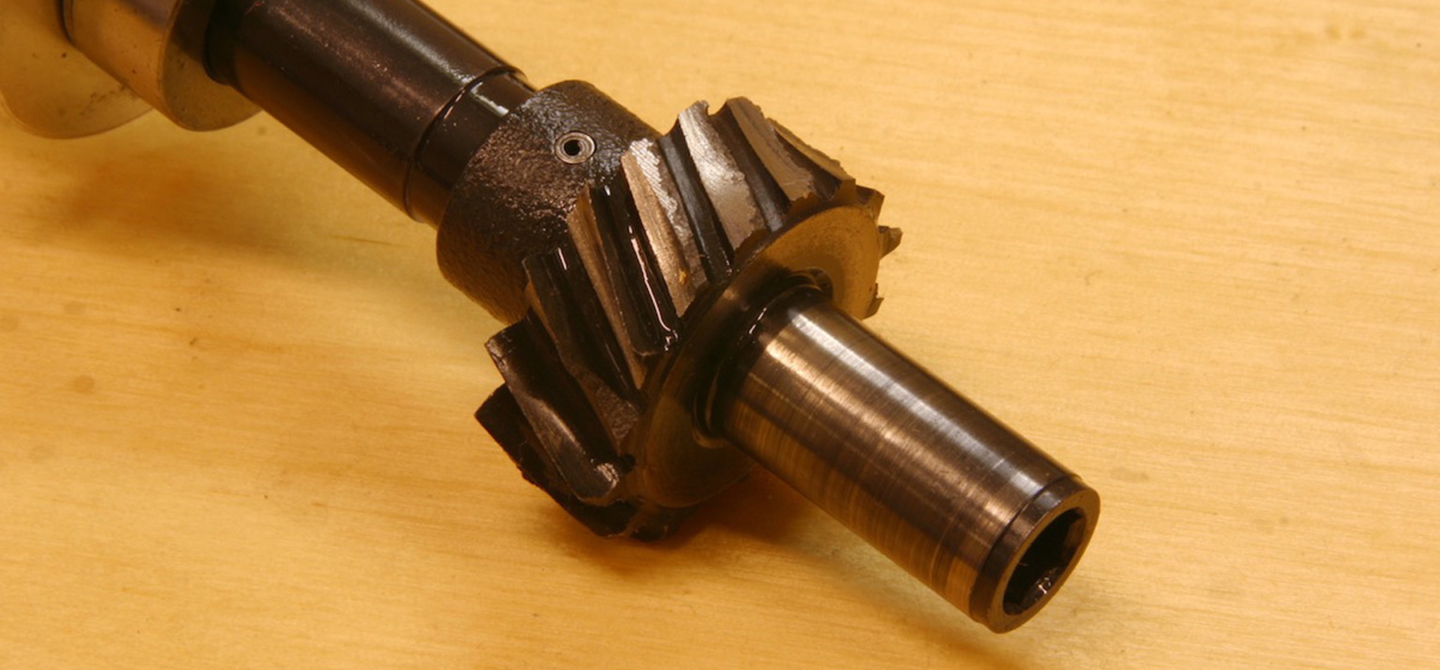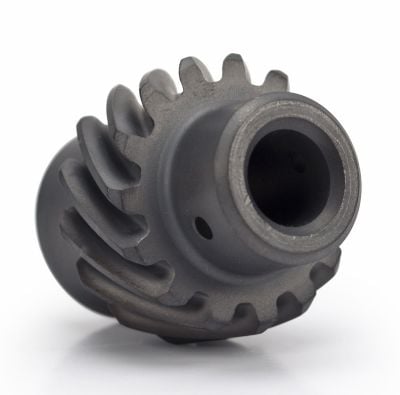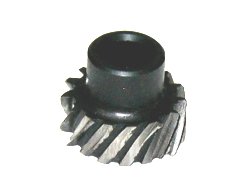You’ve taken the time to plan your recent engine build, right down to the last component. The engine block and head work was done at a very reputable machine shop, but you wanted to save some of your budget by assembling the engine yourself. When it came time to break in your newly built mill, it idled fine at first. Then, halfway through the break-in procedure, the ignition timing was decaying and getting worse. You noticed a strange color and metal in the oil when you drained it after break-in. Sound familiar?
On more than one occasion, an engine has destroyed itself early after an engine rebuild because of improper distributor-gear selection. Understanding what types of distributor gears are available and which of these work with the different types of camshafts are critical to an engine’s long-term life and success.
We checked with several distributors and camshaft specialists to get the lowdown on gear meshing and materials in this often-overlooked maintenance procedure. Steve Davis at Performance Distributors, Chase Knight of Crane Cams, Dan Hodgdon of COMP Cams, and Erik Brock of MSD Ignition all helped us travel through the mine field of information related to selecting the correct distributor gear for your application.
Problems With Improper Gear Selection
COMP Cams’ Dan Hodgdon started off by saying, “There are several trouble areas that may arise due to improper distributor gear selection. First of all, it is imperative that shimming heights are correct, meaning it is critical for the distributor gear to be centered to mesh properly with the cam gear. If this is not done, a process called “knife-edging” will occur.”
Performance Distributor’s Steve Davis added, “Problems with irregular distributor gear wear can be caused by the distributor being “bottomed” out on the oil pump,” explaining that correct installation goes along with correct gear selection. “Bottoming of the distributor usually occurs when engine work such as the block, heads, and intake have been milled. This will allow the distributor to sit farther down in the engine,” said Davis. Another method of checking for proper installation is by applying machinists dye to the distributor gear. Spin the engine by hand several rotations. Remove the distributor and inspect the wear pattern. You should have an even pattern through the middle of the gear. If this is not the case, add distributor shims until the correct pattern is obtained.”
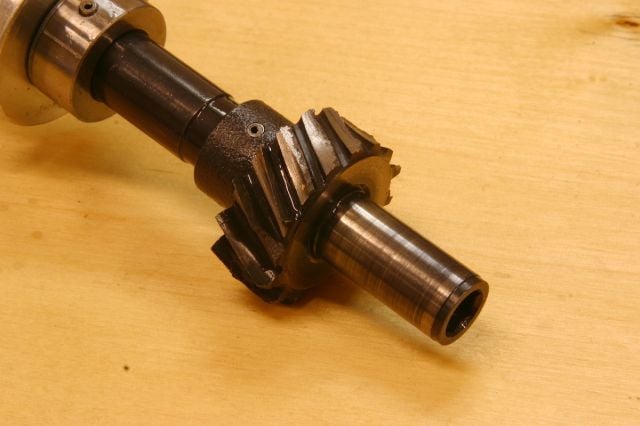
Improper gear selection can lead to an excessively worn distributor gear and potential engine rebuild.
Crane Cams’ Chase Knight supported checking the gear meshing, “You should absolutely do it. It can lengthen the life of your components and your engine. Another thing that will also help with gear meshing is done prior to installing the distributor gear. Use a soft-bristled wire wheel on the gears to remove any burrs and soften any hard edges,” he advised.
MSD Ignition’s Erik Brock explained material differences,”Many OEM manufacturers used a cast-iron gear from 1986 back. From 1986 forward, we saw a change to hydraulic-roller cams in engines, and steel distributor gears were being used. Many of the high performance guys are using billet race cams that require the use of a bronze gear. Mating the wrong distributor gear to the camshaft can cause huge problems, and potentially involve rebuilding the engine.”
The scariest thing is when a customer calls in asking for help selecting a distributor gear and they don’t know what kind of cam they have. – Chase Knight
Types of Distributor Gears
According to Hodgdon, “The four most common types of distributor gears are composite, bronze, cast-iron, and hardened steel. Composite distributor gears are manufactured from a super-strong polymer that both increases durability, and is the lightest in weight. Bronze distributor gears are made from extruded aluminum bronze with 5-percent nickel added. These gears conform well to the mating camshaft, and will not damage the cam gear. Since cast iron contains two percent carbon, these gears work well with cam gears made from the same material. The hardened steel distributor gears are most often used in mass production situations like original equipment manufacturers, and are designed for the longer life of a mild factory engine.”
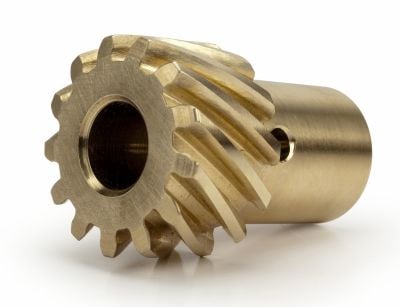
Bronze distributor gears work well with many types of camshaft materials but require monitoring for wear more frequently than other types of distributor gears.
Crane’s Knight believes that distributor gears are one of the most important considerations,”correctly matching your distributor gear to the type of camshaft in your application is one of the most critical steps when building an engine. You must consider both camshaft type and material, because they affect the type of distributor gear you need. Selecting the improper gear can lead to premature camshaft wear.”
“Ideally, your distributor gear will be softer than your cam gear. This allows for proper mating and prevents excessive wear on the cam gear. Most cams come with multiple distributor-gear options. However, it is of utmost importance to know your cam type prior to making a selection,” added Hodgdon.
MSD’s Brock emphasized,”contact the camshaft manufacturer to check which gear you should be using. If you are uncertain what camshaft is in the engine, your best bet is to run a bronze gear.” Crane’s Knight added,”the scariest thing is when a customer calls in asking for help selecting a distributor gear and they don’t know what kind of cam they have. Our coated-steel distributor gear works on virtually anything, but under no circumstances should you use a bronze gear on a cast camshaft.”
A Matched Pairing
Most Common Camshaft /Distributor Gear Pairings
- Hydraulic Flat-Tappet Camshaft – Most cast iron or composite gears
- Mechanical Flat-Tappet Camshaft – Most cast iron or composite gears
- Hardened Steel Hydraulic-Roller Camshaft – Hardened steel or composite gears
- Hardened Steel Mechanical-Roller Camshafts – Hardened steel or composite gears
- Nitrided Camshafts – Hardened steel or composite gears
- Billet-Steel Hydraulic-Roller – Bronze or composite gears
- Billet-Steel Mechanical-Roller – Bronze or composite gears
Explaining why selecting the proper distributor gear is ultimately an important choice, Knight said, “Once the gear on either a steel cam or a cast-iron cam is worn excessively, the cam itself must be scrapped. There is no repair for this problem, and the only option is to buy a new cam. This can be a painful and expensive mistake.”
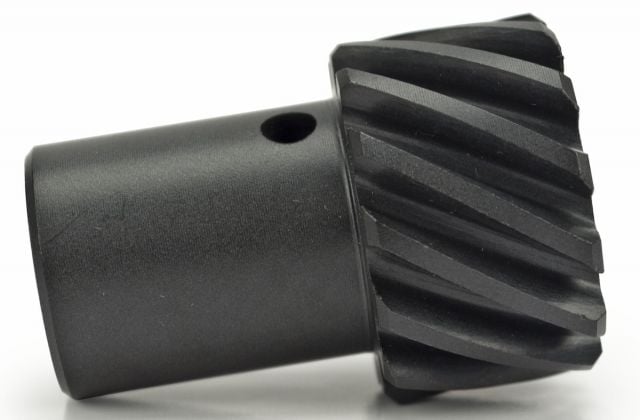
Distributor gears constructed from composite material are another option for high performance race engines.
Other Areas of Concern With Distributor Gears
Knight and Hodgdon both say that high-volume oil pumps used on stock or mildly modified engines cause a problem. “Cam gear or distributor gear wear is usually NOT caused by the high-volume oil pump itself, but by insufficient internal engine running clearances, says Knight adding,”when a high-volume oil pump is used in an engine with stock internal clearances, the increased volume of oil can’t flow through the engine fast enough to relieve the back pressure created. This places an increased load on the distributor gear, and leads to accelerated wear.”
Davis warned of gear wear from the distributor bottoming out on the oil pump in Chevrolet V8 engines, “Check for play in the distributor shaft. If there is no up and down movement in the distributor shaft, then the distributor is bottomed on the oil pump. You will need to add a nylon distributor shim of correct thickness until the up and down play is achieved.”
Davis explained that “Nylon distributor shims are available from Performance Distributors in thicknesses of .030-, .060- and .100-inch. When the correct shim has been determined, add the gasket and proceed with the final installation. Always use a gasket with the shims. Do not stack gaskets in an attempt to raise the distributor height on the intake. Gaskets will compress and the distributor will eventually bottom out.”
Hodgdon brought up Ford distributor gears,”small-block Fords have historically been one of the toughest applications in which to make a gear “live” due to engine oiling design. They also have the smallest distributor gear in the industry, and the oil splash may not be sufficient.”
Davis agreed, “Excessive distributor-gear wear can be a problem with Ford engines. Most of the time, the problem again results from the use of a high-volume oil pump. High-volume oil pumps put a lot of stress on the distributor and cam gears. A high-volume oil pump is not necessary on a street-driven engine that turns no more than 7,000 rpm.”
Davis provided the following technique to solve the problem with a high volume oil pump and the potential stress on distributor gears:
- Drill a .030-inch hole in the lifter/oil galley plug behind the distributor. This will allow additional lubrication on the distributor and cam gears. This will not lower oil pressure enough to hurt the engine.
- Ford oil pump mounting brackets have elongated holes. Due to this, the distributor shaft and oil pump shaft should be aligned so that the distributor turns freely before tightening the mounting bracket bolts. Failure to do this will cause a binding situation, thus damaging the gear.
- Stock Ford hex oil pump-drive shafts are known to vary in length, which could cause a bottoming or binding situation.
- Brass distributor gears can be used to avoid damaging the cam gear. Brass gears are softer and can wear out quicker than the cast gear, but will not cause damage to the cam gear. If using a brass gear, check it occasionally for wear.
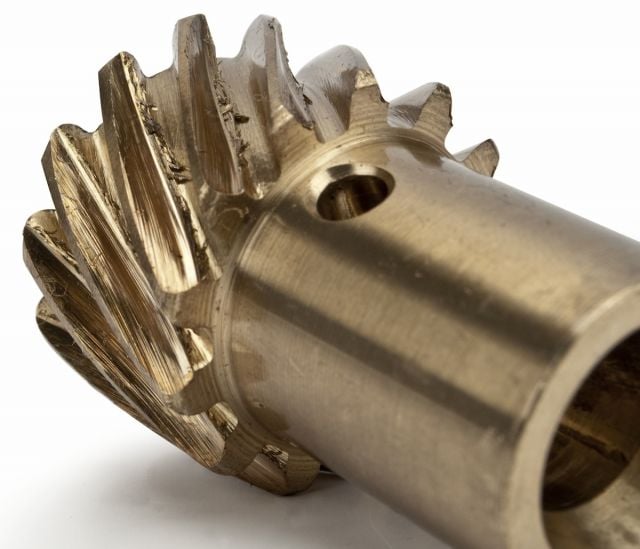
Improper gear selection will likely result in damaged distributor gear or camshaft distributor gear drive.
Overview
There are several trouble areas that may arise due to improper distributor gear selection. First, it is imperative that shimming heights are correct, meaning it is critical for the distributor gear to be centered to mesh properly with the cam gear. Next, the use of a high-volume oil pump can wreak havoc with all types of distributor gears, due to the increased resistance of rotating these types of oil pumps. Finally, if you are replacing a camshaft, it is also necessary to match it with a new distributor gear. The old gear will be mated to the original camshaft and will not work properly with the new cam application. Remember to check with your camshaft manufacturer for distributor gear requirements.


